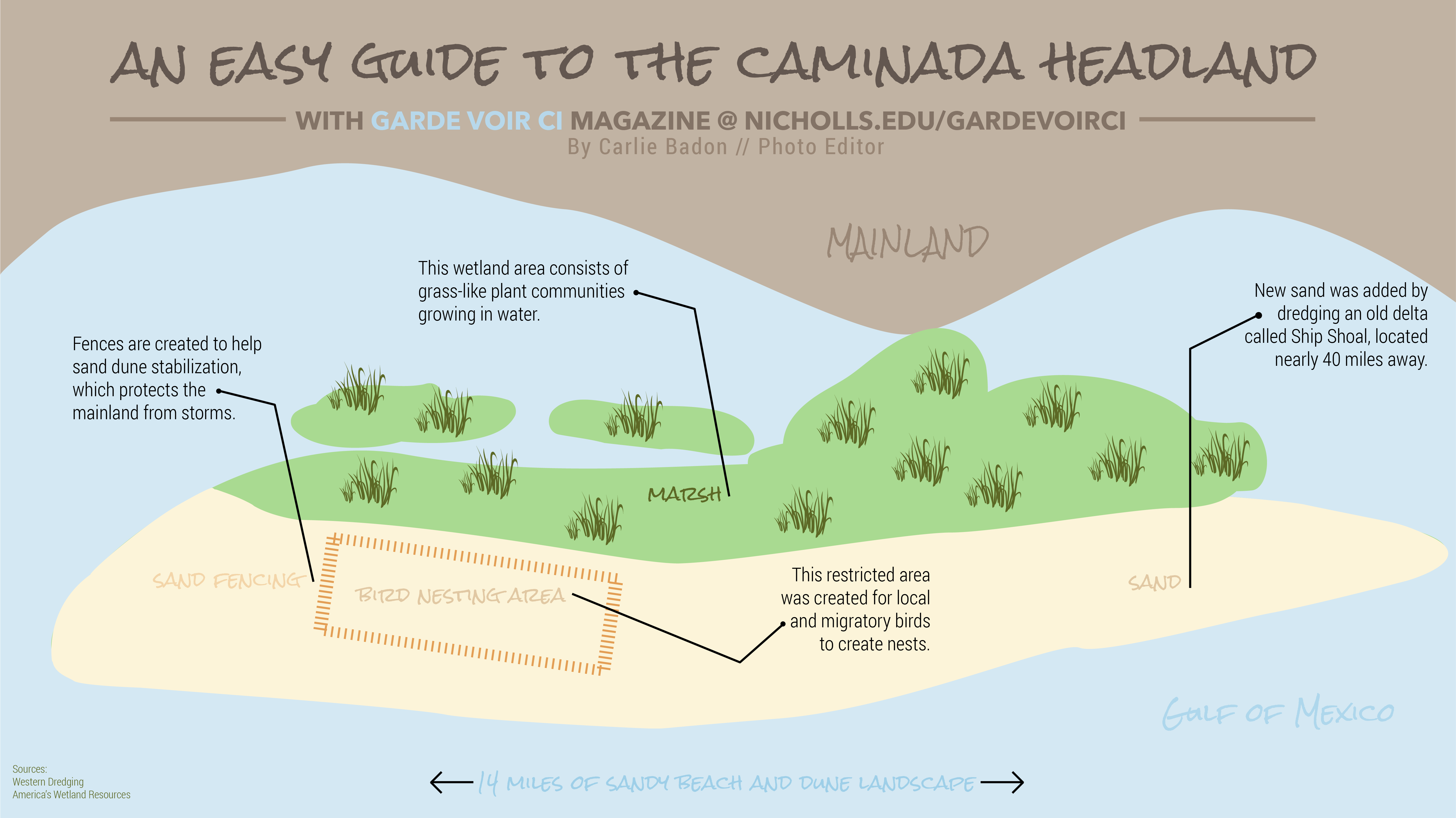by Kathleen Rodrigue, features editor
The Coastal Protection and Restoration Authority implemented a $200 million, two-year restoration project to rebuild the Caminada Headland, one of the largest headlands to disappear from Louisiana’s coast due to coastal land loss.
“We’re just losing so much land now. Without coastal restoration projects, all locals would have to move,” said Mary-Suan Bourg, a Houma native who enjoys spending time at the Caminada Headland.
Completed in March 2018, the now 13-mile barrier island stretches from the mouth of Bayou Lafourche toward Grande Isle, protecting Port Fourchon and several species of migratory birds.
The Caminada beach stood proudly along Louisiana’s coast 50 years ago. Bourg says she remembers swimming, fishing, crabbing, riding in trucks along the sand dunes, and even camping in tents at night when she was a young child. However, due to the effects of coastal erosion and saltwater intrusion, the headland and dunes diminished completely over time, leaving Louisiana’s coast vulnerable, says Joni Tuck, external relations manager for the Greater Lafourche Port Commission.
With this threat, Louisiana coastal advocate organizations and state coastal organizations combined their resources and raised money to make this project possible. Maloz said the money came from the Coastal Impact Assistance Program, surplus dollars from the state’s budget, and the largest piece came as a result from the BP oil spill.
“The Caminada Headland is one of the largest projects the state has completed to date in terms of restoring a barrier island and headland,” says Simone Maloz, CEO of Restore or Retreat.
Sand from Ship Shoal, a barrier island 30 miles off the coast of Terrebonne Parish that is now underwater, was dredged and pumped about 9 million cubic yards to rebuild the headland, says Tuck.
“This is the first project in Louisiana to dredge sand from an offshore shoal in the Gulf of Mexico to restore habitat on a barrier shoreline,” according to the CPRA’s website.
Maloz said the sand from Ship Shoal is of excellent quality; she compared it to the white sand seen on the beaches in Florida. “It’s not dirty, muddy Mississippi sand,” she says.
About 300 acres and six miles of beach and dune on the western half of the headland, which protects Port Fourchon, has been restored. The eastern half, which includes Elmer’s Island and wildlife habitat refuge, has also been restored and includes about 500 acres and seven miles, according to the CPRA’s signage at the headland.
Though the restoration piece of the project is complete, Tuck said the State of Louisiana will continue implementing projects at the Caminada Beach for recreational and accessibility purposes. Six million dollars will fund an improved road system leading to the beach, a shuttle service along the Caminada Beach, Kayak launches, trash can areas as well as more culverts under the road for better water drainage, Tuck says.
Maloz says this restoration project, previously known as the Barataria Basin Barrier Shoreline or Triple BS project, was a high priority in the Coastal Protection Master Plan because the barrier island is the first line of defense against storm damage.
Not only does the Caminada Headland protect the coastal residents and industries it surrounds, but it also provides protection to the largest portion of Louisiana’s economy — the oil and gas industry.
The Caminada Headland protects Port Fourchon’s multi-billion-dollar assets above ground and, perhaps more importantly, below ground, says Tuck. The Caminada headland protects three of the largest pipelines in the country, including the LOOP pipeline, Shell-Mars pipeline, and Chevron’s biggest pipeline in the Gulf of Mexico.
“Together those pipelines produce about 1 in every 5 barrels of oil in the country,” she says. “So just under 20 percent of all the nation’s oil is brought ashore through those three assets and is serviced by the assets in Port Fourchon every day.”
Several similar projects to restore and protect our disappearing coast are underway. For a glimpse of these projects, visit coastal.la.gov.

